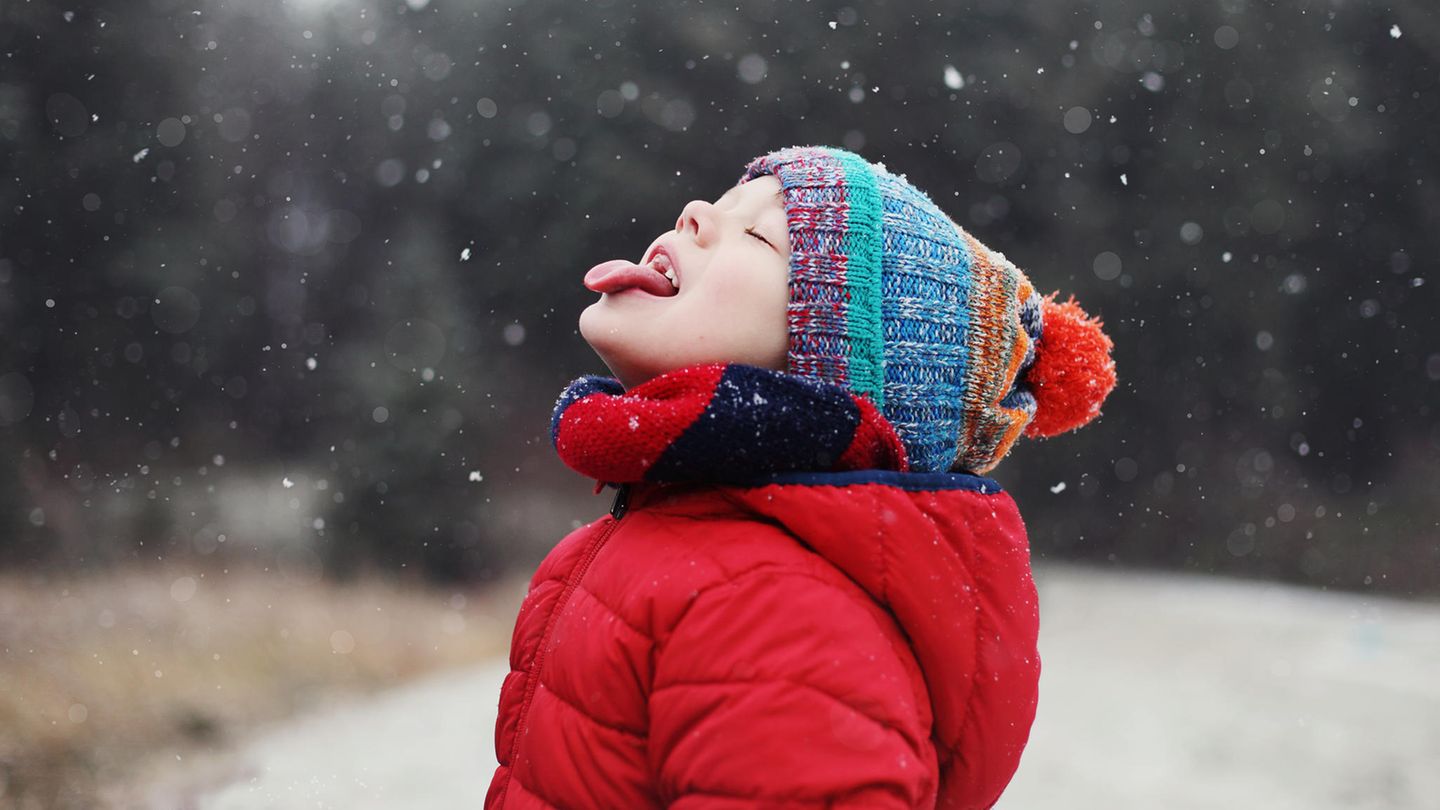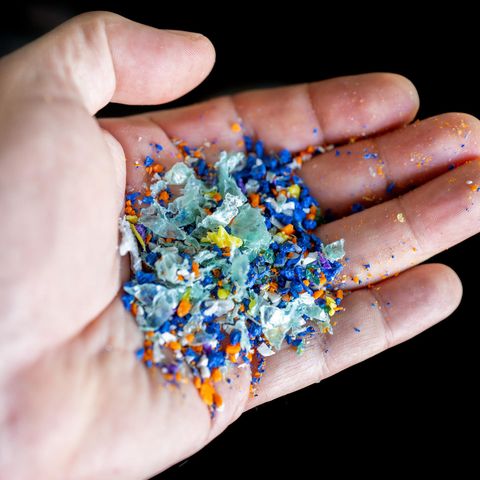Good to know
Delicious snow? It’s going ok. Why you shouldn’t eat too much of it
Copy the current link
Snow is seductive – its flake shapes, the temperature, the consistency – and it melts so beautifully in your mouth. But is it safe to eat it?
The touch is very gentle, barely noticeable most of the time when snowflakes hit the tongue. Melted in an instant, the branched structures leave behind just an idea of cool wetness. From a handful of it, kneaded together into a tight ball, it can be bitten off like an apple; Snow that first thaws and then freezes again can be sucked like ice cream. But as tempting as it is to indulge in the textures of the many types of snow, it’s not a good idea.
“The main thing is that it’s not yellow” – a saying that everyone has probably heard in connection with playing in the snow. Because where snow-white has turned to snow-yellow, a two- or four-legged friend has most likely peed beforehand. A sample of brown slushy snow and soil mixture or blackened exhaust snow from the side of the road is usually avoided. But snow that has just fallen from the cloud, without yet touching the ground, is generally considered pure. A misconception.
“Rainwater and snow are not food and are not germ-free,” said the Federal Environment Agency to “Ökotest”. For example, contamination via the air path with combustion products, dust or microbial aerosols is conceivable. A team of researchers from Northern Ireland found a large number of bacteria when testing fresh snow in 2018. The findings were not alarming. However, some of the bacterial strains found can cause infections in humans. These could be particularly dangerous for people with weakened immune systems, small children and older people.
Snow is a fine dust trap
Rain can be dirty; pollen, bacteria, fine dust, exhaust gases and heavy metals collect in it. According to a Swedish study from 2022, rainwater is now so polluted that it is no longer drinkable. The research team from Sweden had detected extremely long-lasting and harmful chemicals in high concentrations even in remote areas of the world. Snow is not frozen rain; snow forms directly in the clouds, but like rain, it can absorb pollutants from the air.
Especially on days with high levels of fine dust, there is a risk that pollutant levels in the snow will also be high, writes “Ökotest”. In 2016, Canadian scientists conducted an experiment in a cold chamber to discover that snow quickly accumulates pollutants such as fine dust. Particulate matter pollution is usually highest where traffic volumes are high, especially in so-called street canyons and in industrial places.
Certain weather conditions can also contribute to increased fine dust levels. More detailed information about the respective air quality can be accessed via the.
It’s snowing plastic
What the Alfred Wegener Institute found out is also not very appetizing. In a 2019 study, the researchers discovered that snow in many places is contaminated with microplastics. Even remote places like the Arctic are affected. The tiny plastic particles are plastic degradation products.
“Microplastics have been detected in all regions and all ecosystems on earth; they are also found in numerous foods, drinks and in many human and animal organs and tissues,” said the Federal Environment Agency.
From road salt to feces
Snow caught from the air is one thing, but collected from the ground is something completely different. The snow continues to contaminate the ground – for example through animal feces and urine, but also through grit or road salt. Road salt not only pollutes the environment, but in humans it can cause vomiting and diarrhea, among other things.
“The road salt is completely normal table salt, which, however, has no eating quality,” informs the Poison Information Center North. “Individual grains do not pose a problem; a doctor should only be consulted if larger quantities occur.” The problem: It is often impossible to tell with the naked eye whether there is road salt in the snow or not.
Only “enjoy” snow in moderation
Catching a snowflake with your tongue every now and then or eating a handful of clean snow is not directly harmful to your health. Parents don’t have to panic if their child plows down the toboggan run with their mouth open. In most cases, consumption in small quantities is safe. Nevertheless: In areas with a lot of traffic or other exhaust fumes, it is advisable to avoid eating snow.
+++ More from the “Good to know” series +++
Source: Stern
I’m Caroline, a journalist and author for 24 Hours Worlds. I specialize in health-related news and stories, bringing real-world impact to readers across the globe. With my experience in journalism and writing in both print and online formats, I strive to provide reliable information that resonates with audiences from all walks of life.







